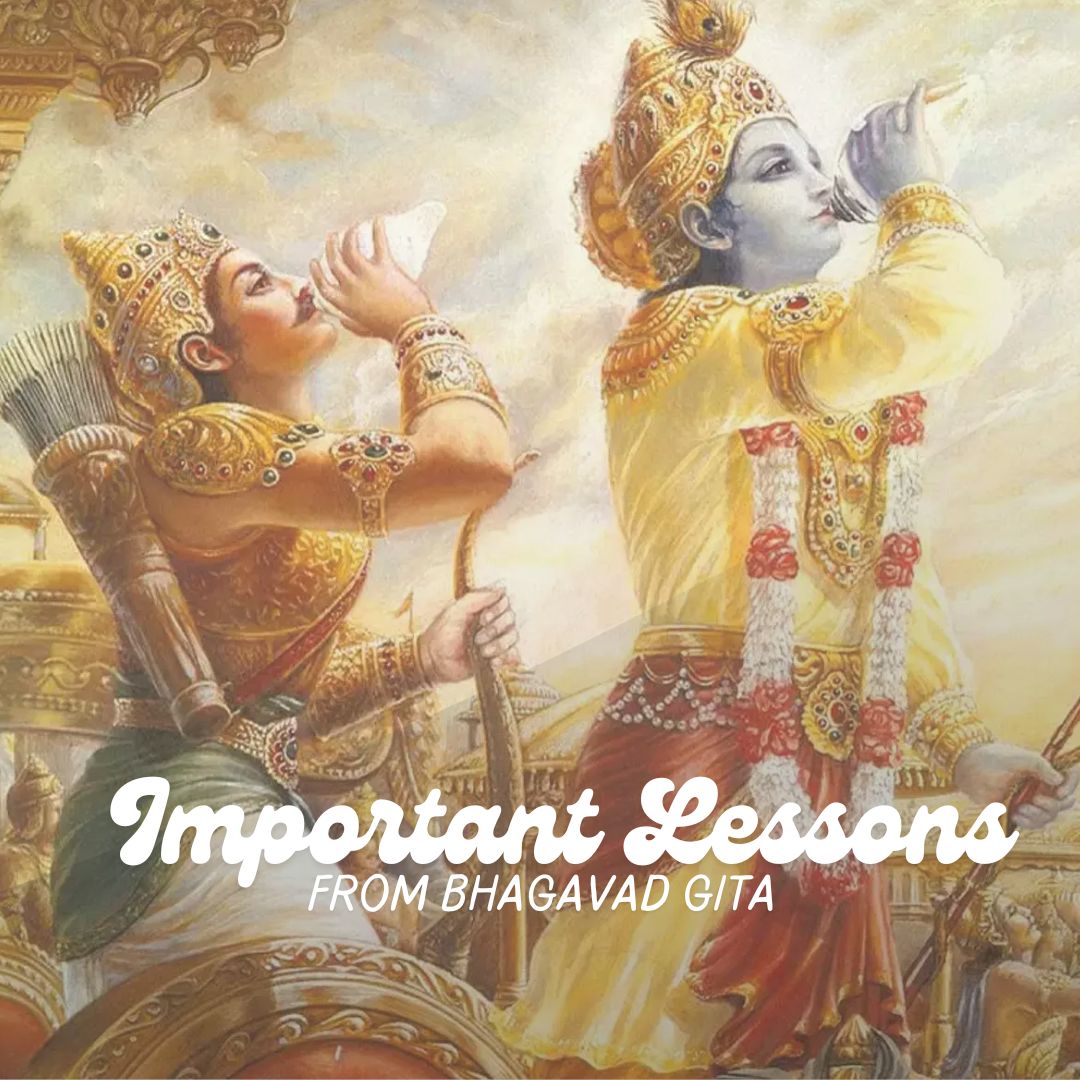Bhagavad Gita’s Most Powerful Life Lessons in Simple Words

Introduction: Why the Gita Still Speaks to Us Today
Have you ever wondered why we’re here, what our true purpose is, or how to stay calm in difficult times?
You’re not alone.
Thousands of years ago, on the battlefield of Kurukshetra, Arjuna asked the same questions to Bhagwan Krishna. The answers he received became the Bhagavad Gita—a divine guide for everyday life.
But you don’t have to be a warrior to understand it. Even in today’s busy world, the Bhagavad Gita’s life lessons are deeply relevant—whether you’re a student, a working professional, a parent, or simply someone seeking peace.
Let’s dive into 5 powerful life lessons from the Bhagavad Gita—explained in the simplest way, with examples and reflection points.
1. Do Your Duty, Without Worrying About Results
Shloka Reference: Karmanye vadhikaraste ma phaleshu kadachana
📘 Meaning: “You have the right to do your work, but not to the results of your actions.”
Simple Example:
Think of a student preparing for an exam. You can study sincerely, but you can’t control the paper or the results. Obsessing over the outcome only creates anxiety. Instead, focus on giving your 100%.
Ask yourself: What would happen if you started enjoying the process rather than worrying about results?
2. Control Your Mind, or It Will Control You
Shloka Reference: Bandhur ātmātmanas tasya yenātmaivātmanā jitaḥ
📘 Meaning: “A person who has conquered their mind is their own best friend. But one who hasn’t, becomes their own enemy.”
Simple Example:
Ever tried meditating for just 5 minutes, only to be distracted by your phone, random thoughts, or to-do lists?
This is your mind acting like a wild horse. The Gita says—learn to guide it.
Try this: Next time you’re stressed, pause, take 5 deep breaths, and observe your thoughts. Don’t react. Just watch. That’s the first step to mastering your mind.
3. True Peace Comes from Within, Not the Outside World
Shloka Reference: Yogah karmasu kaushalam
📘 Meaning: “Yoga is excellence in action.”
Here, yoga doesn’t just mean asanas. It means balance, presence, and awareness in every action you do.
Simple Example:
Imagine cooking for your family. If you do it with love and awareness, that’s yoga. If you’re rushing through it with irritation, that’s imbalance.
Reflection: Are your daily actions filled with peace or pressure?
4. You Are Not This Body—You Are the Soul
Shloka Reference: Na jayate mriyate va kadachin…
📘 Meaning: “The soul is never born, nor does it ever die.”
Simple Example:
We mourn over wrinkles, age, loss… but the Gita reminds us—this body is like a dress. The real you is the soul—eternal and indestructible.
Isn’t it freeing to know that your true self is beyond body, beauty, and aging?
5. Let Go of Attachment, Embrace Surrender
Shloka Reference: Sarva-dharmān parityajya mām ekaṁ śaraṇaṁ vraja
📘 Meaning: “Abandon all doubts and surrender completely to Me.”
Surrender doesn’t mean weakness. It means trusting a higher plan, even when things don’t go your way.
Simple Example:
Lost a job? A relationship didn’t work out? Sometimes, we hold on too tightly to what’s not meant for us. Surrender helps us move forward.
Question to ponder: What are you holding on to that you need to let go?
Final Thoughts: The Gita is a Personal Guide, Not Just a Book
The Bhagavad Gita is not about religion. It’s about clarity, courage, and consciousness. It speaks to your inner struggles and shows the path ahead—with simplicity, depth, and love.
And the best part? You don’t have to learn Sanskrit or be a scholar to understand it.
🌿 Want to Dive Deeper? Join DeepRoots Online Shloka Classes
If this blog inspired you, imagine what studying the complete Bhagavad Gita with meaning and chanting could do for your life.
At DeepRoots, we help people like you connect with the Gita in a modern, meaningful way—shloka by shloka, word by word, meaning by meaning.
✨ Classes are online, easy to follow, and guided by experienced teachers.
📌 Ready to begin your spiritual journey?
👉 Visit onlineshlokaclasses.com and enroll today.
Let’s walk the path of the Gita together—one verse at a time. 🌸

